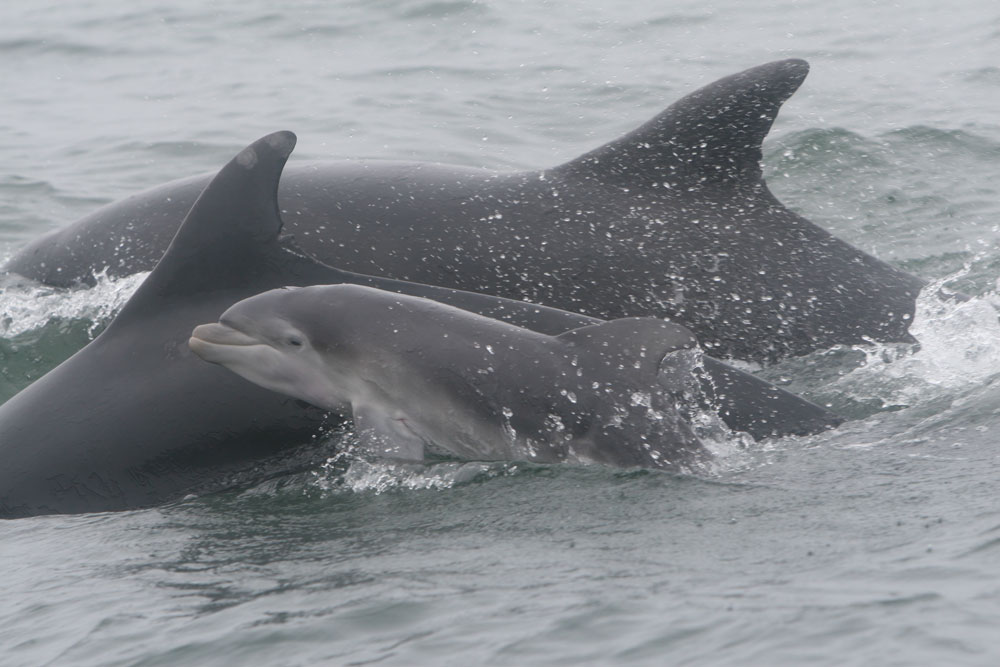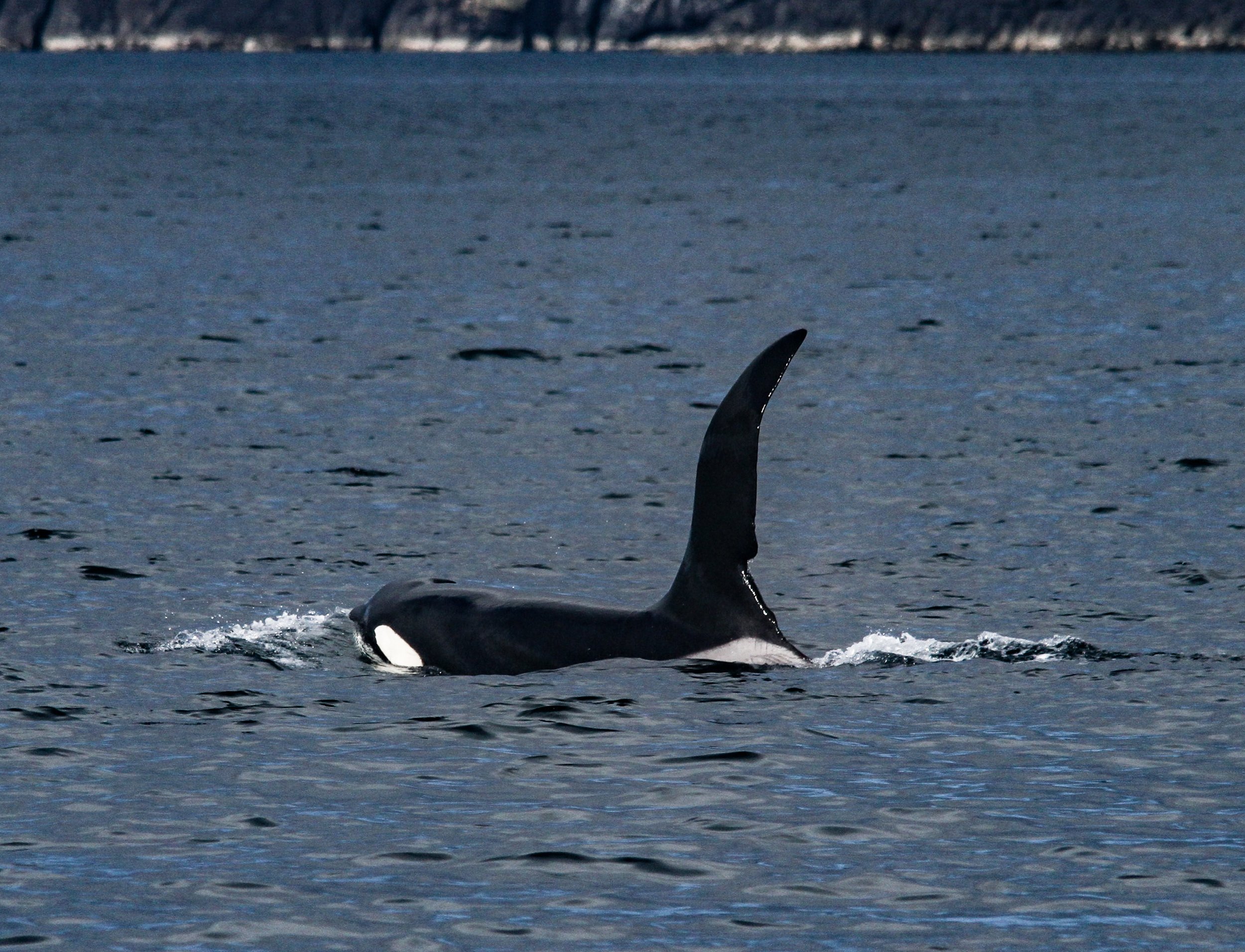What might you spot this Spring?
Spring is a vital time to monitor whales, dolphins, and porpoises, collectively known as cetaceans, in the waters of western Scotland. Our seas begin to warm and whales migrate into our productive waters to feed.
24 different species, a quarter of the world’s whales and dolphins, have been recorded in Hebridean seas, with many of these being seen throughout the Spring and Summer months.
With the days getting longer and the weather improving, we’re all getting ready for the season ahead. In the last month alone, we have already had over 100 reports, with eight different species being seen, including two species whose numbers start to increase this time of year due to Spring migration; minke whales and common dolphins. There has also been an exciting sighting of white-beaked dolphins recently.
You can explore what was seen this time last year on the live sightings map, by downloading Whale Track or visiting https://whaletrack.hwdt.org/sightings-map/.
Looking back on this time last year, you can see the sightings reports slowly increase, with some favourites starting to return to our waters, such as the basking sharks. The first basking shark was reported around Tiree at the start of May last year, by Tiree Sea Tours. With the busiest months for basking sharks being July and August.
Basking Shark © HWDT
Basking sharks generally start to be seen in Scottish waters between May and October, with higher densities being seen around Coll and Tiree. They congregate around areas with higher prey availability. Zooplankton, which is their prey of choice, can be highly concentrated around areas of ocean mixing.
Last year was a quieter year for basking shark sightings with just over 40 sightings reported through Whale Track. I wonder if more will be seen this year.
© Sally Nicholson April 2021
Minke whales are another species which generally are seen more between April and October. However, in recent years they have been spotted throughout the year. We’ve already had several reports sent into us, with the first one of 2022 reported in February.
It isn’t yet fully known where the minke whales we see in Scotland travel to in the winter. Photographs are very important to help us monitor these animals, enabling us to track the movements of individuals in the population such as Knobble and Kasey. Any photos you get of minke whales’ dorsal fins could help us learn even more about their movements. Please submit your photos alongside your Whale Track sighting either in the app or using the new photo portal. Alternatively, you can send your photos in to sightings@hwdt.org.
Bottlenose dolphin calf
Photo ID also helps us learn more about our resident species, such as the bottlenose dolphins, which can be seen year-round. Data gathered through photographs sent in by members of the public have deepened our understanding of this species, having identified two distinct populations of bottlenose dolphins on the west coast.
In recent weeks, we have received many reports of bottlenose dolphins around Barra and the Inner Hebrides. Michael sent in this wonderful video of a large pod of bottlenose dolphins, including some juveniles and calves.
Bottlenose dolphins can give birth year-round but generally young are seen more often throughout the summer season. Smaller in size and lighter in colour, young dolphins can be seen swimming next to the adult but closer to their tail. This behaviour, of swimming in the adults slipstream, is thought to aid the young, using up less energy while travelling.
John Coe ©HWDT
Finally, I couldn’t write this without mentioning the much-loved celebrity killer whale, John Coe. Recently, sighting reports sent in from members of the public, showed John Coe and his buddy Aquarius, once again visiting Ireland at the end of March. Excitingly since then, the pair were spotted by our team on board our research vessel Silurian, over the Easter weekend.
Last year, the adventurous pair went on a UK wide tour, we wonder where they will show up next? Could you be the next person to spot John Coe?
So, as you enjoy the Easter holidays and (hopefully) nicer weather, keep your eyes on the sea, as you might catch a glimpse of some of our resident and visiting marine animals.
There are a number of amazing boat operators who record their sightings through excursion mode, providing vital effort-based data which helps us better understand the movements, distribution and abundance of whales, dolphins, porpoise and basking sharks in the West Coast of Scotland.
If you’re in the mood to head out to sea on a guided boat tour, then check out the WiSe Scheme list of accredited responsible boat operators.
We hope with the new land-based survey option added to Whale Track, even more people will get involved in effort-based data collection and spend some dedicated time watching the sea. Every report sent into us helps to deepen our understanding of the marine environment and these amazing animals.
For ideas of places to visit which are good whale watching locations from land, visit the Hebridean Whale Trail.
If you would like to learn more about the new and improved Whale Track and how to conduct land-based surveys or use excursion mode, join us for an hour-long training session on Thursday 21 April at 7pm.
The Whale Track upgrade is supported by the NatureScot Nature Restoration Fund and the course is free thanks to The Co-op Local Community Fund.






